MFT Analysis
for Incident Responders
What's going on in here?
- New Technology File System (NTFS) used on most Windows machines
- Master File Table (MFT) contains most metadata for entire file system
- found in
[filesystem root]/$MFT, once per filesystem - rather than rely on layers of technology, work with directly with the MFT
Direct MFT analysis for great good
- MFT is typically small, (although dedicated 12.5% of volume), often under 100MB
- compress well (usually ~90% ratio)
- answer most questions you have
- good for data recovery
- flexible set of analysis tools

Don't rely on a tool until you know what its doing.
Structures
- MFT is variably sized file
- contents are fixed sized records: 1024 bytes
- (at least) one record for each file/directory
- MFT reference: index into the MFT array
- references among records form FS tree
MFT Record
- static size: 1024 bytes
- small header
- contiguous attributes, stored contiguously
typedef struct {
/*Ofs*/
/* 0*/ NTFS_RECORD_TYPE magic;
le16 usa_ofs;
le16 usa_count;
/* 8*/ le64 lsn;
/* 16*/ le16 sequence_number;
/* 18*/ le16 link_count;
/* 20*/ le16 attrs_offset;
/* 22*/ MFT_RECORD_FLAGS flags;
/* 24*/ le32 bytes_in_use;
/* 28*/ le32 bytes_allocated;
/* 32*/ leMFT_REF base_mft_record;
/* 40*/ le16 next_attr_instance;
/* 42*/ le16 reserved;
/* 44*/ le32 mft_record_number;
/* sizeof() = 48 bytes */
} __attribute__ ((__packed__)) MFT_RECORD;
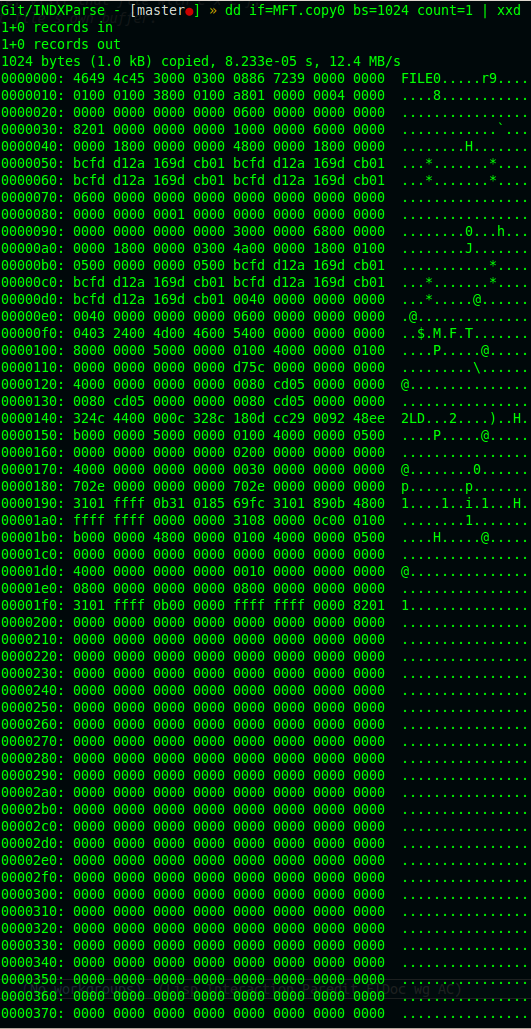
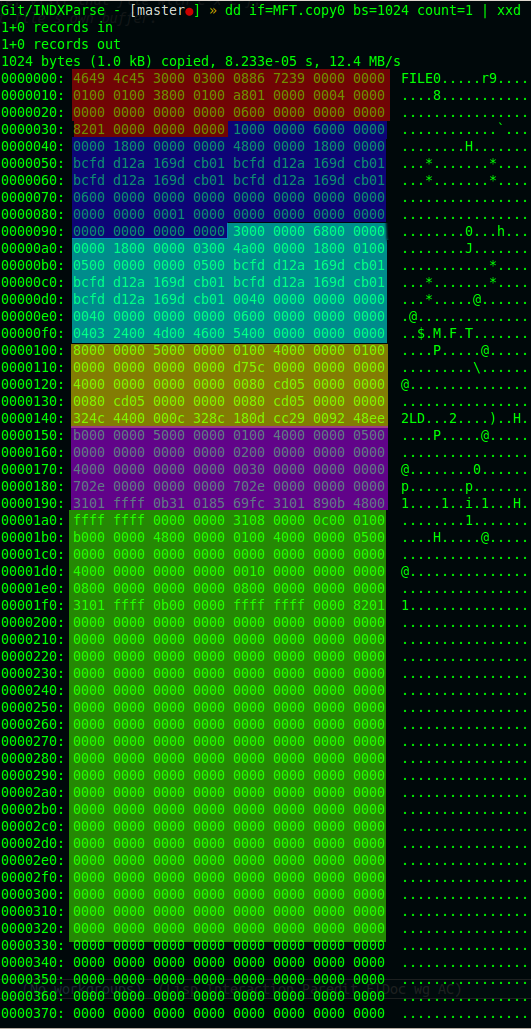
Attributes
- 17 standard attributes, extensible by user
- <>16d/0x10 - Standard Information ($SI)
- 48d/0x30 - Filename Information ($FN)
- 128d/0x80 - Data
- 144d/0x90 - Directory Index Root
- 160d/0xA0 - Directory Index Allocation
- common structure:
- DWORD attribute type
- DWORD attribute size
- offset 0x72, attribute specific data
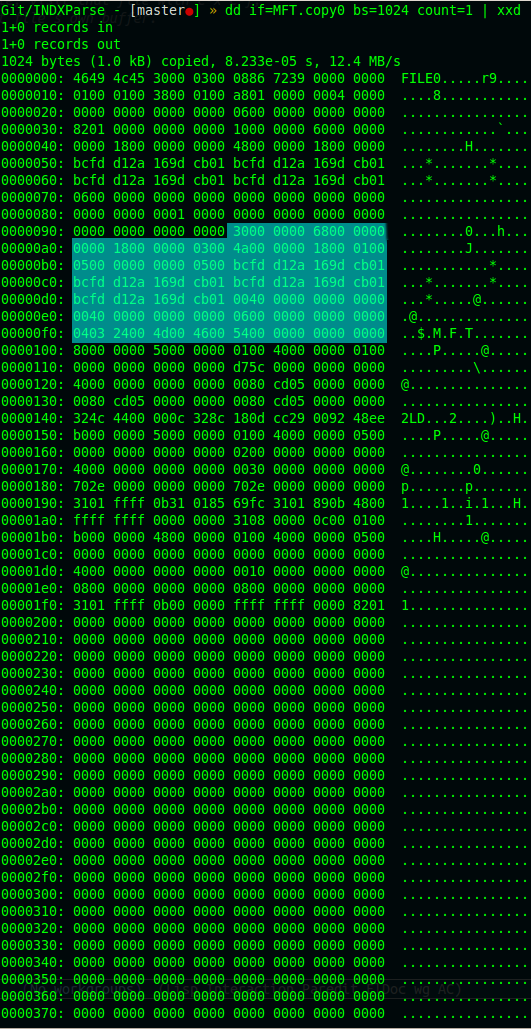

Residency
- all attributes may not fit in static size
- resident attribute: content stored inline
- non-resident attribute: attribute points to external data runs
- examples:
- small file: stored within MFT
- large file: fragmented across disk
- note: things get really complex for huge files
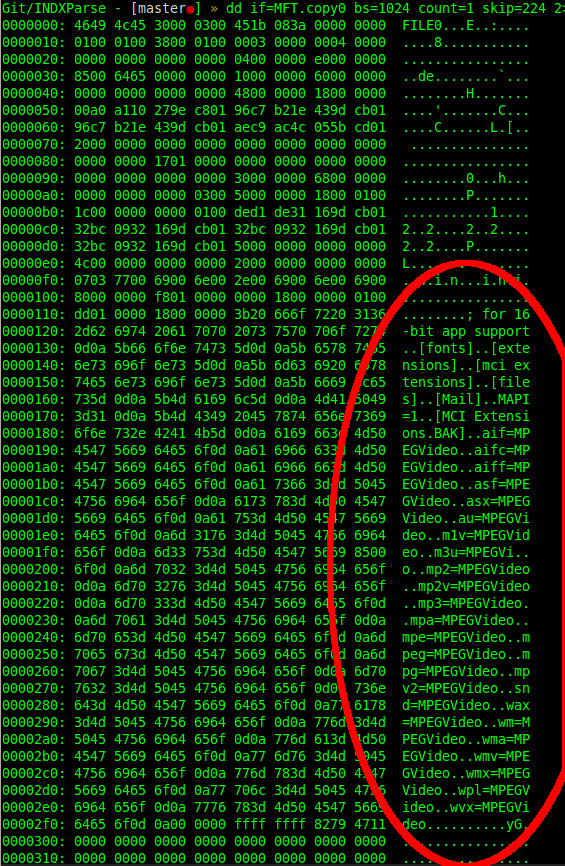
Standard Information
- always resident, one per entry
- contains good stuff:
- MACB timestamps
- hidden? system? other flags
- quota info
- not size
- not filename
Filename Information
- maybe multiple per entry, at least one resident
- types: 8.3, Unicode, POSIX
- contains good stuff
- filename
- MACB timestamps of filename
- parent directory MFT reference
- size sorta
Timestamps
- At least eight (8) timestamps per entry
- Standard Information
- For: file content
- Shown by Explorer, most forensic tools
- Easily modified via
SetFileTimeAPI
- Filename Information
- For: filenames
- Difficult to stomp, need unusual copy operation (SetMACE) or kernel driver
Tools
Tool: MFTView
- boring name, sorry
- interactive inspection of MFT with tree view
- some features:
- strings, hex view
- integrated INDX root parsing
- data extraction & cluster run calculation
- source
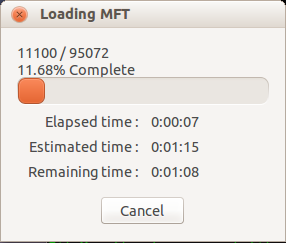
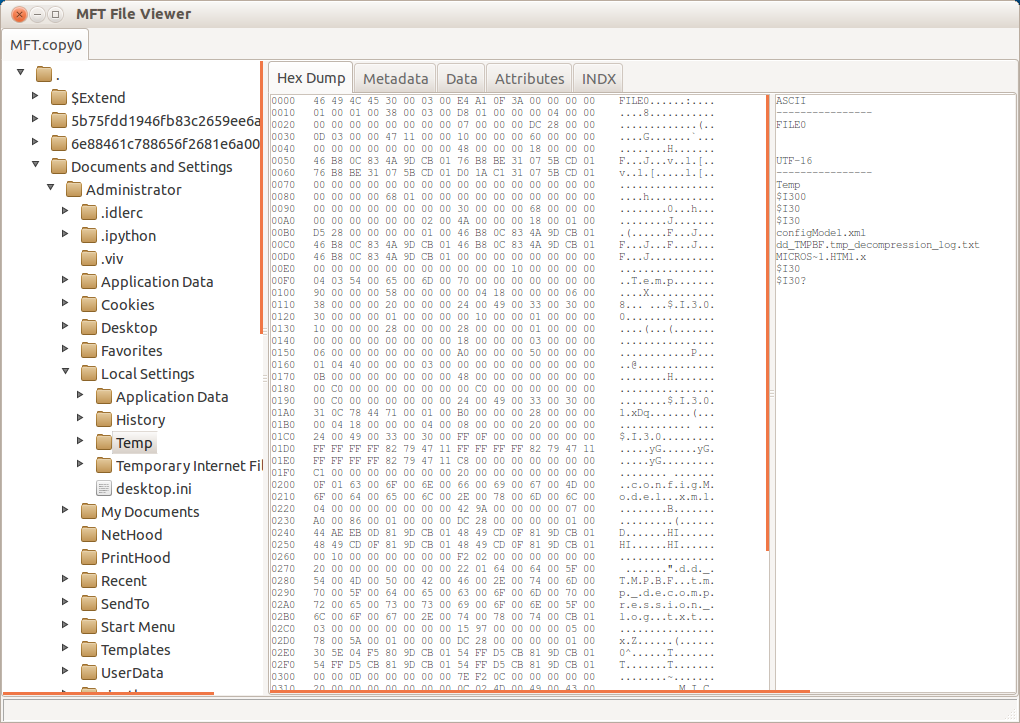
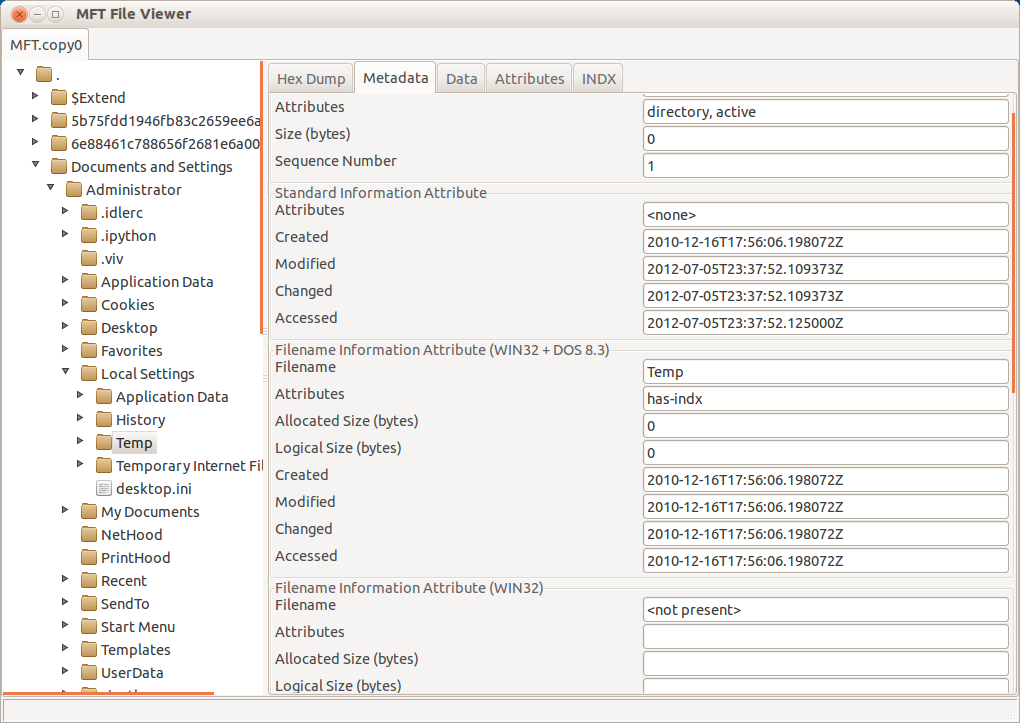
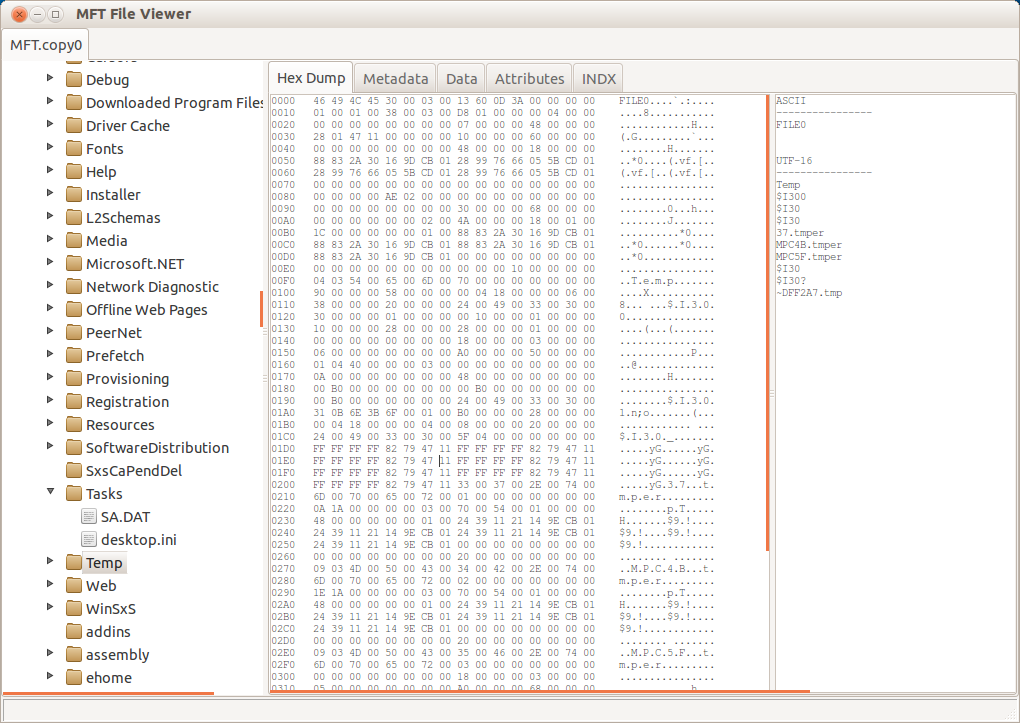
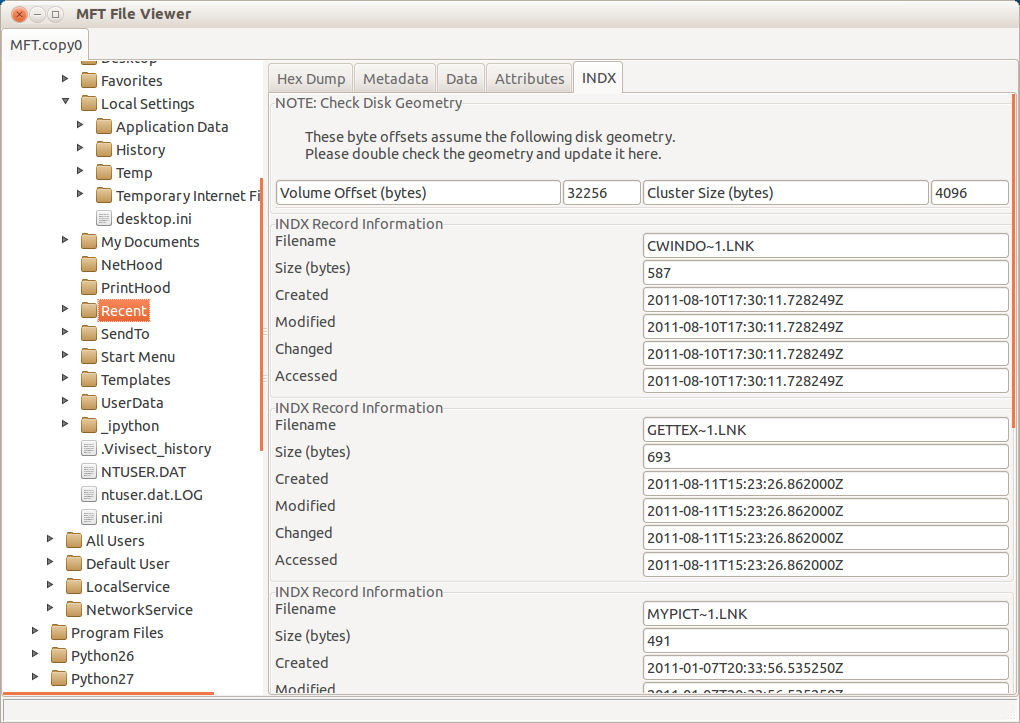
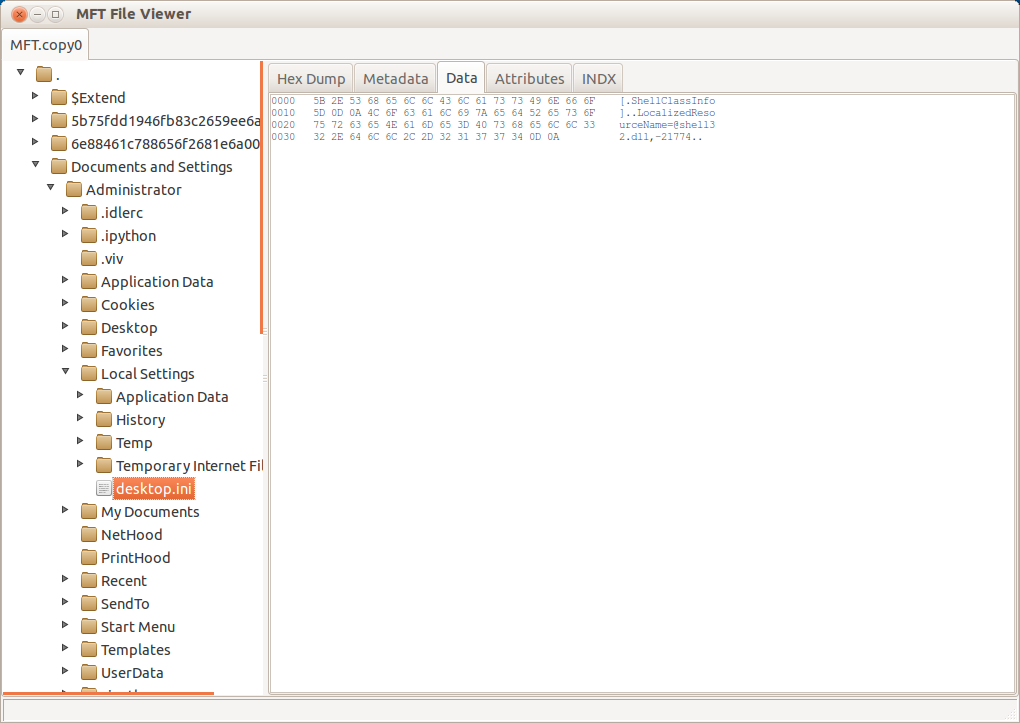
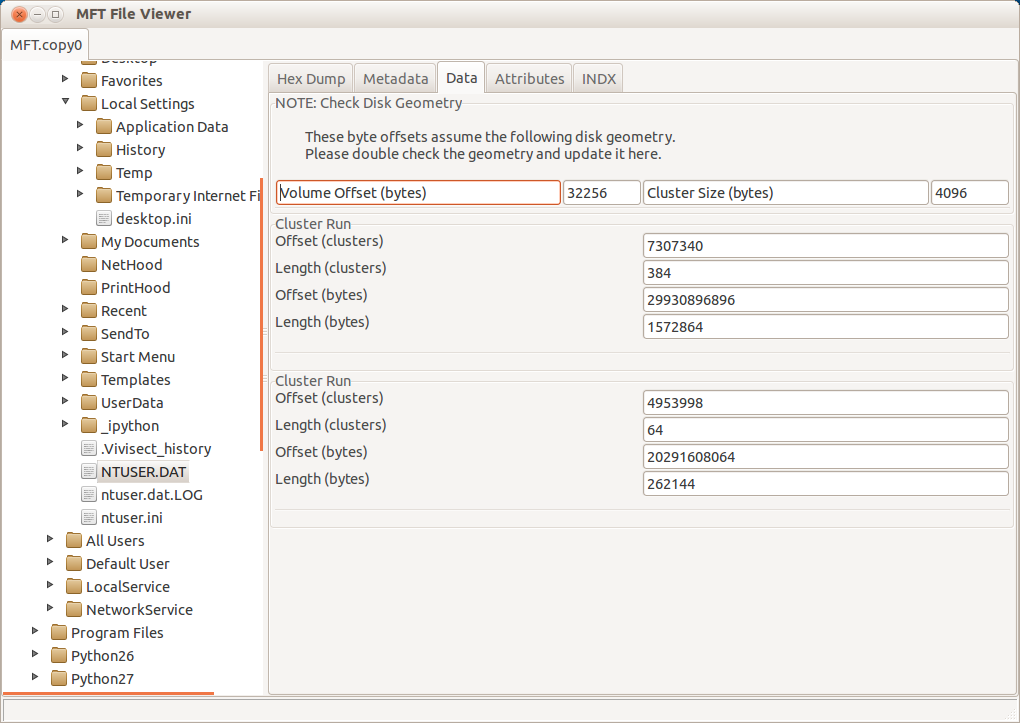
Tool: list-mft
- compare with: AnalyzeMFT
- offers better memory usage, speed
- supports:
- standard information
- multiple filename information
- INDX root
- renamed from MFTINDX.py
- source

Tool: get_file_info
- manual MFT record inspection
- timeline all embedded timestamps
- extract strings from allocated/slack space
- source
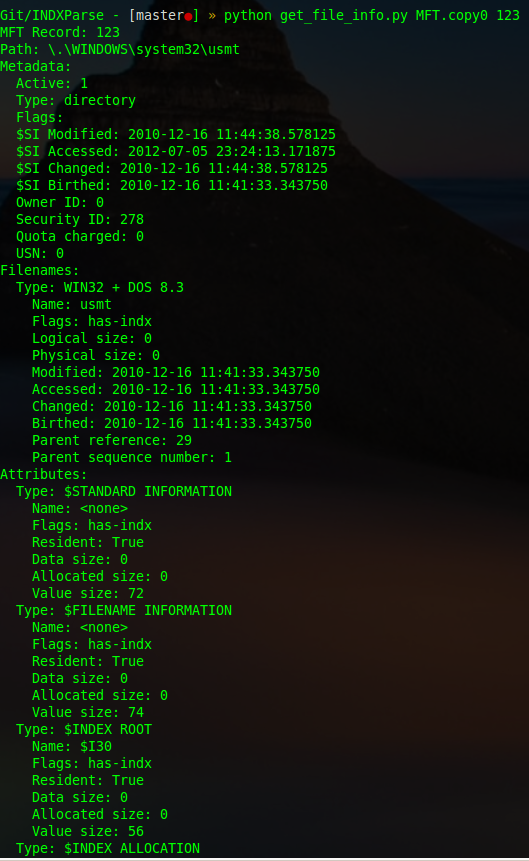
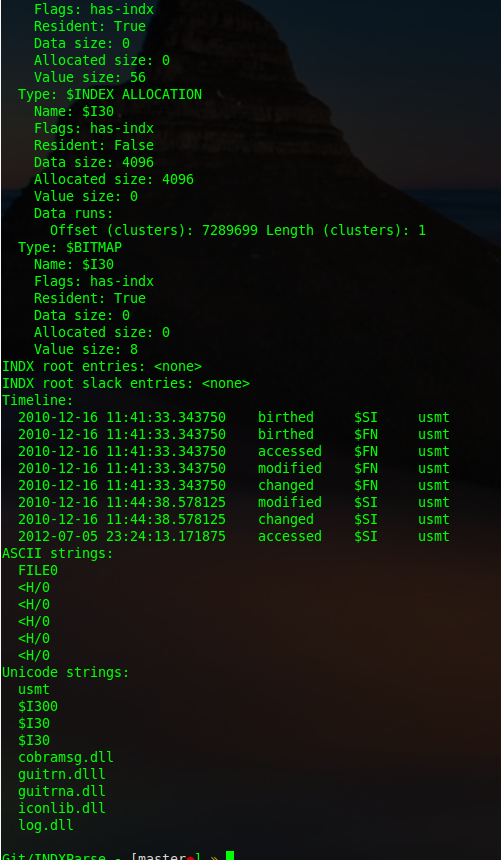
Tool: fuse-mft
- FUSE driver for MFTs
- mount an MFT and explore using favorite CLI/GUI tools
- read from resident files, all metadata mirrors MFT entries
- check
/path/to/file::metafor goodies - source
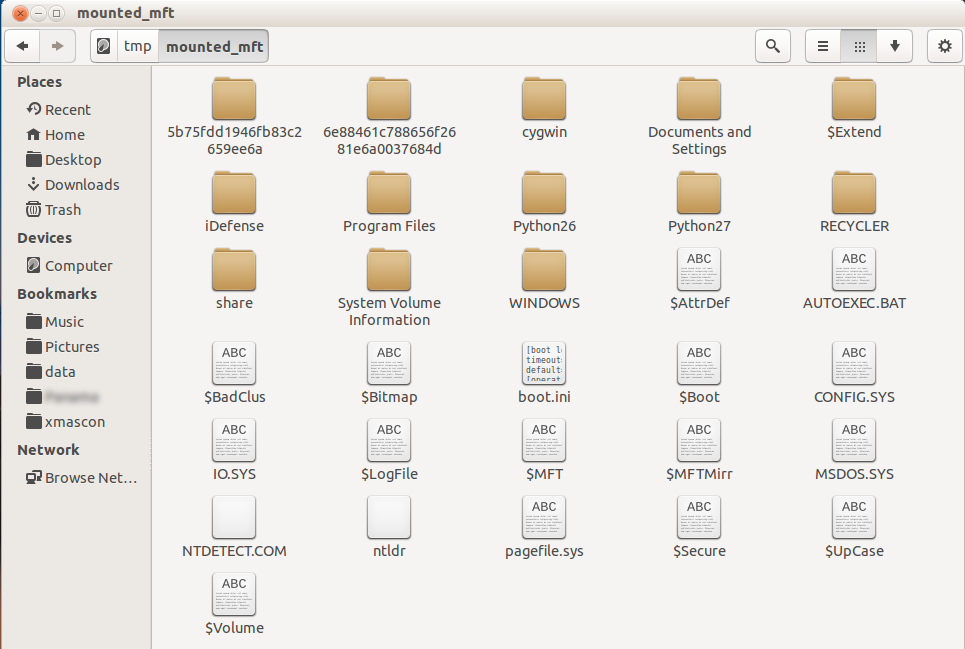
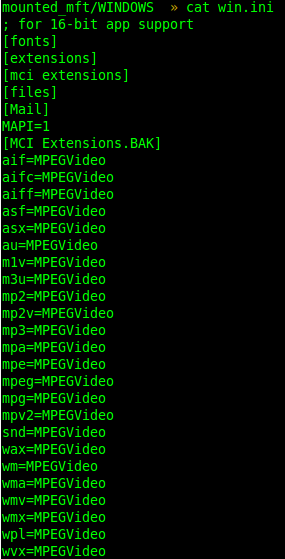
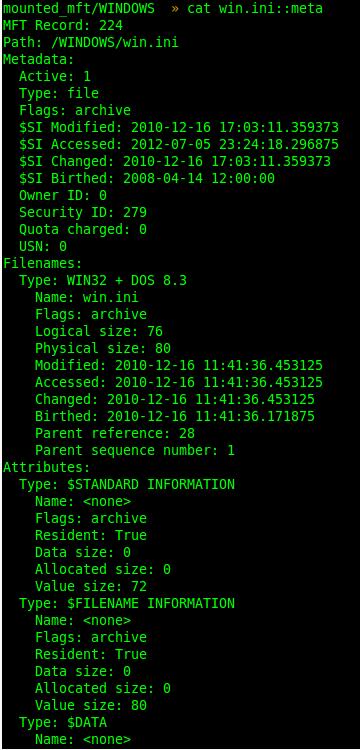
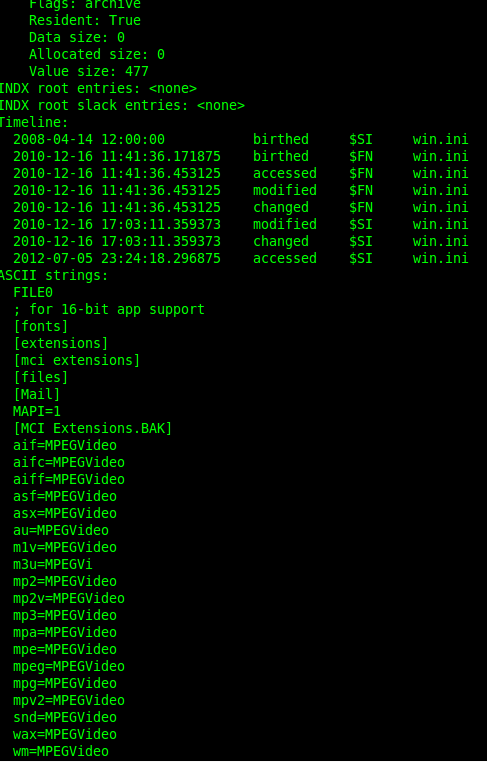
Advanced Topics
Record Slack Space
- NTFS doesn't zero out records, overwrites old data
- new record content often smaller, often recoverable artifacts
- inspect final bytes for:
- UTF-16LE strings
- timestamps
- DO THIS! automated tools don't do this for you
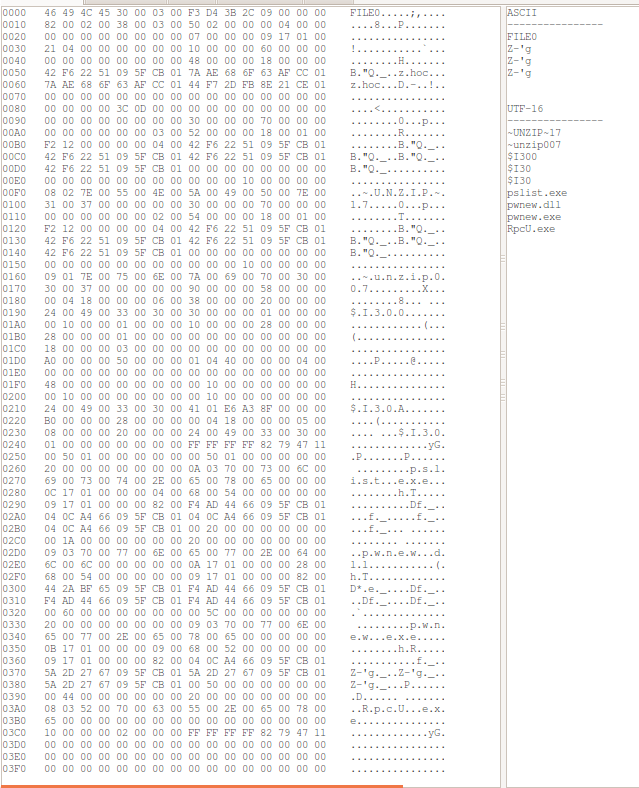
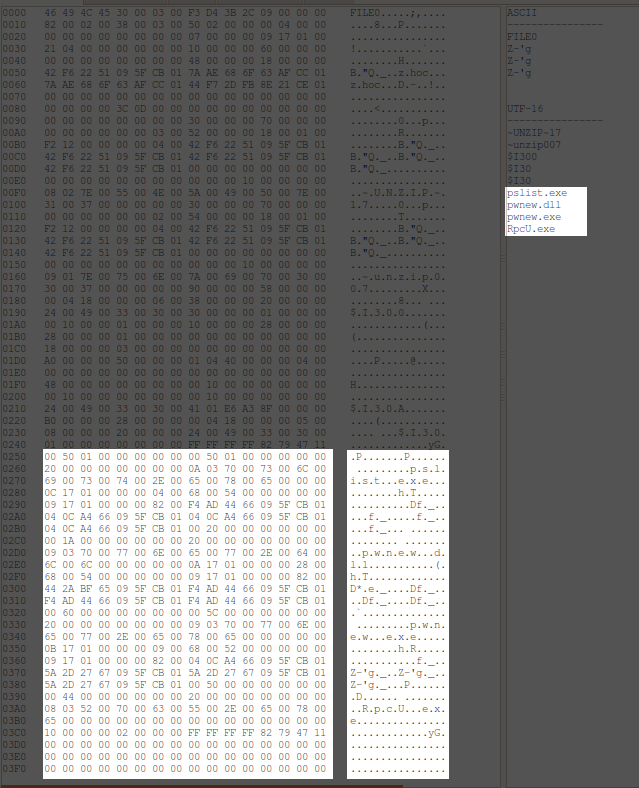
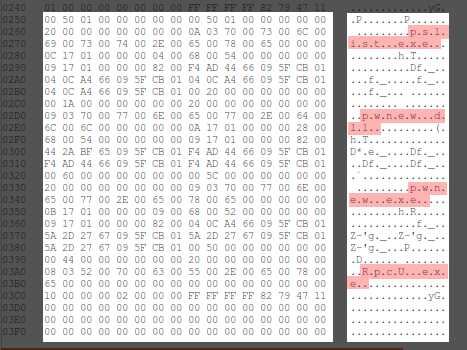
Directory Indices
- commonly called INDX buffers
- B+ tree for fast lookup of filenames (usually)
- page size is 4096 bytes (== cluster size)
- key is $FN attribute
- value is MFT reference
- attribute
INDX_ROOTalways resident, usually ~4 entries - attribute
INDX_ALLOCATIONalways non-resident - use INDXParse.py to recover file metadata
Alternate Data Streams
- programs may store "hidden" data in ADSs
- unnamed $DATA attribute is a file's content
- NTFS supports extra named $DATA attributes
file_basename:ads_name- examples:
- malware stores configuration in ADS
- browsers mark downloaded files with :Zone.Identifier
- use SysInternals streams.exe
File System Tunneling
- file created within 15 secs of deleted file inherits metadata
- supports programs that copy/replace file during a save operation
- includes, but not limited to, timestamps
- research topic: extract/carve "quarks" from metadata cache
Rebuilding FS Tree
- top down parsing of FS is fast, but requires non-resident directory indices
- bottom up reconstruction is self-contained in MFT
- walk all $FN parent references
- shortcut: cache common subtree roots
KBOTD(s)
Directory Indices are not Unique
- Also indices for
$SII,$Quota,$ObjId - NTFS supports multiple index views over same data(!)
B+ indices support variable sized keys
Ownership is complex to compute
$SI → $SII → SID → Registry/AD → Username